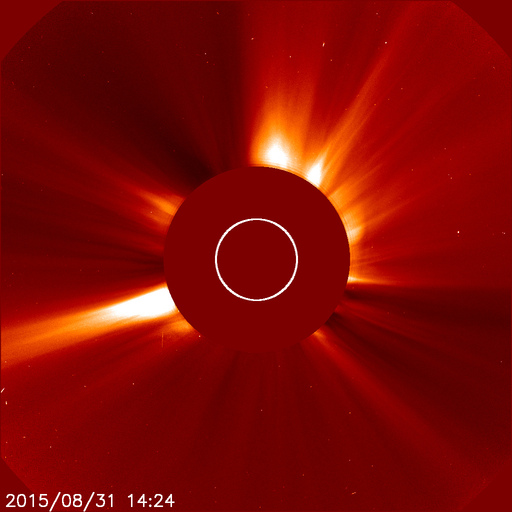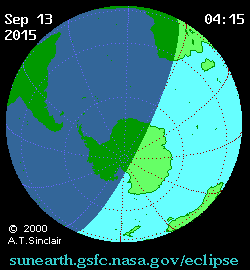On Sept. 13, 2015, the moon will partially obscure the sun from view in southern Africa and much of Antarctica during a partial solar eclipse.
An eclipse occurs when the moon passes directly—or nearly directly, in the case of a partial solar eclipse—between the sun and Earth. Because the moon’s orbit is slightly tilted with respect to the sun-Earth line, its shadow only infrequently passes across Earth’s surface.
Credits: NASA’s Goddard Space Flight Center
Download this video in HD formats from NASA Goddard’s Scientific Visualization Studio
The Sept. 13 partial eclipse will be an example of a less dramatic eclipse – the moon will only cover about 80 percent of the sun, which will not equate to noticeable reduction in light for observers on the ground. If you’re lucky enough to be in one of the areas in the Southern Hemisphere that will see the eclipse, remember that you should never look at the sun directly. A partial eclipse should only be observed by using a telescope with a special solar filter, eclipse glasses, or a pinhole projector.
Such partial eclipses are of limited scientific value, unlike total solar eclipses, which can grant unique views of the sun’s atmosphere. Scientists are gearing up for a total solar eclipse on Aug. 21, 2017. The August 2017 total eclipse will be visible from an approximately 100-mile-wide path that cuts diagonally across the United States. Those in North America who are not along this narrow path—called the path of totality—will see a partial solar eclipse that day. The August 2017 eclipse will be the first total solar eclipse visible from the contiguous United States since Feb. 26, 1979.
Credits: NASA’s Goddard Space Flight Center
Download this video in HD formats from NASA Goddard’s Scientific Visualization Studio

During a total solar eclipse, the moon completely blocks the sun’s incredibly bright face. This is possible because, though the sun’s diameter is about 400 times the moon’s diameter, the sun is also about 400 times farther away from us than the moon is, making them appear to be approximately the same size from Earth. With the face obscured, the sun’s atmosphere—the corona, which is about a million times dimmer than the face—becomes visible to eclipse-watchers. It was only because of total solar eclipses that early scientists could observe the sun’s wispy atmosphere, providing some of the earliest insight into our dynamic sun. Most modern solar observations of the corona are taken with an instrument called a coronagraph, which uses a disk to block the sun in a camera’s field of view, but coronagraphs obscure part of the inner corona as well—which doesn’t happen during a total eclipse.
“During a total solar eclipse, the moon is a near-perfect fit for the sun’s disk, so almost all of the corona is visible,” said Jack Ireland, a solar physicist at NASA’s Goddard Space Flight Center in Greenbelt, Maryland.
This means that a total eclipse can provide fantastic views of the sun’s inner corona, showing the large loops of solar material that dance through it. These eclipse events provide Earth-based scientists and photographers the chance to take more detailed images of the corona than space-based satellite missions can.
Credits: NASA’s Goddard Space Flight Center
Download this video in HD formats from NASA Goddard’s Scientific Visualization Studio
Related Link



























